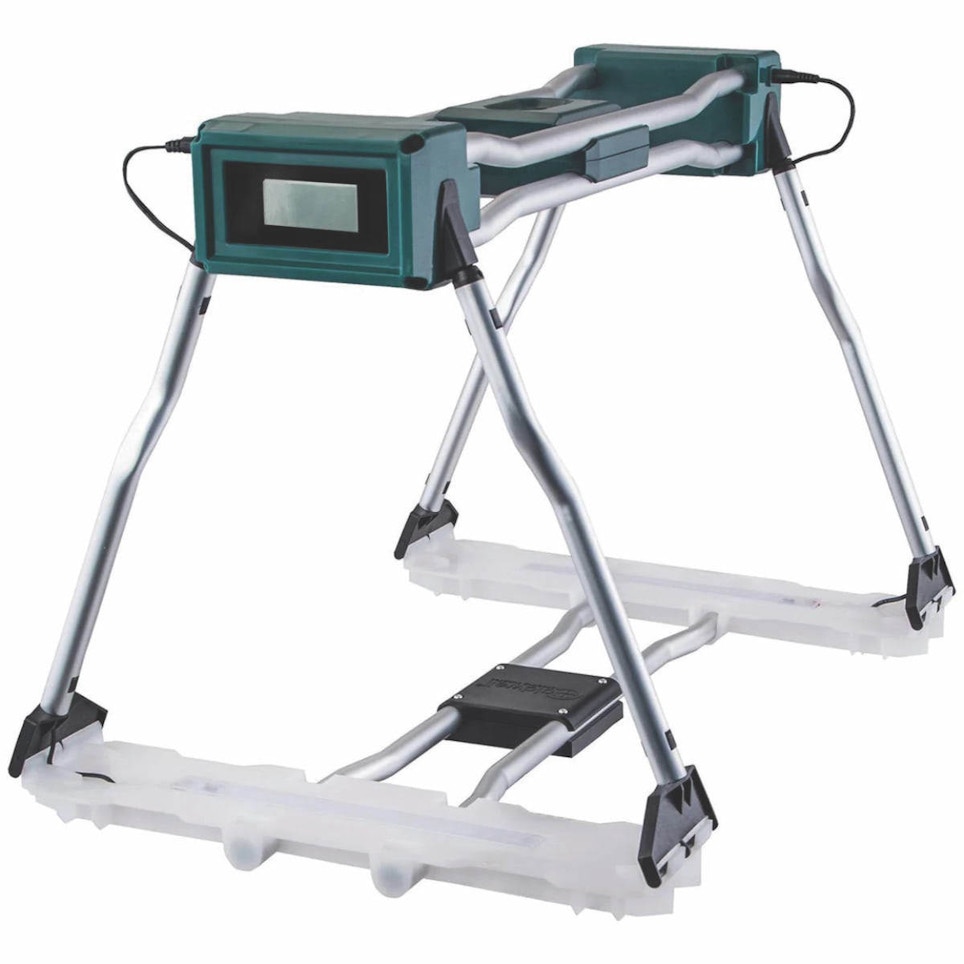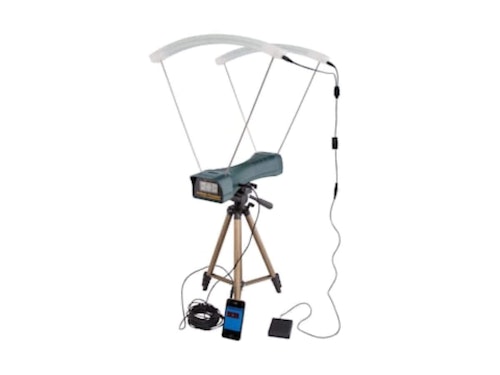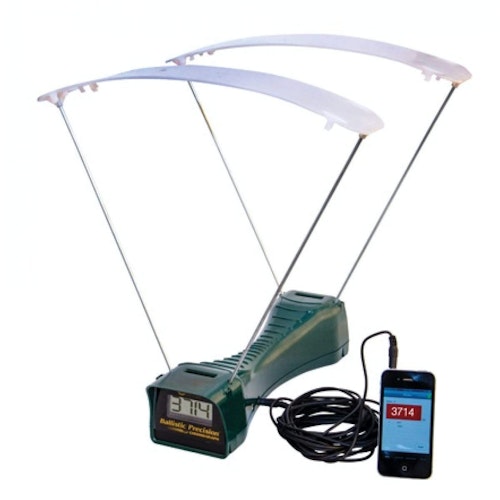It was only last week. Your customer relayed the series of events.
“It was a long shot, about 550 yards. I squeezed off my first round and was amazed to see that I’d missed. A puff of dust kicked up right under the animal. I know I had him sighted in perfectly for that distance.”
He recounts how he’d held a little higher for the next shot, thinking that the scope might have been dropped by one of the baggage handlers at the airport and lost its zero. The next shot was at about 600 yards and the bullet went high and over the animal. Again, the tell-tale puff of dust showed just above the animal’s back.
It turns out that his ammunition came from a reloading buddy who worked up some special rounds for the hunt.
At your suggestion, he leaves the store and takes his rifle to the local range to verify the zero again. When he returns and shows you a target, it has a spread that makes a straight, vertical line. Your conclusion: faulty ammo. He balks at this because his friend was so careful with his loads. He just knew they were accurate. He just knew it! To prove your point, you sell him a chronograph and explain how to use it. He leaves still confident that your answer is wrong.
His first bullet exited the barrel and the sonic crack echoed somewhere off in the distance. The reading on the screen read 2,710 feet per second. His second shot showed a velocity of 2,735. Thinking there must be an error, he fired three more shots. The velocity spread was from 2,700 to 2,778. Somewhat shamefacedly, he returns to the shop with another target. It was almost identical to the first. You were right. The chrono proved the point.
Hunters and long-range precision shooters all seek the same thing — accuracy. But accuracy is dependent on consistency, both in marksmanship and ammunition.
An Introduction
A shooting chronograph is relatively simple to use. It is assembled and placed on a tripod about 15 feet from the muzzle and positioned so that the bullet passes through the triangular windows formed by the front and rear sensors and screens. As shots are fired, the chrono shows a reading of how fast the bullet was traveling as it passed through the unit.
You may have seen expensive watches advertised as chronographs. They measure time. A shooting chronograph is another instrument that measures time. In this case, the measurement is the time it takes a bullet to travel from the first triangular window until it passes through the second one. Unlike a watch, however, shooting chronographs measures seconds with an accuracy of six or seven decimal places. If you know that the distance between the two target windows of the chronograph is 18-inches and the bullet travels that distance in .000465 seconds, it’s easy to calculate the velocity:
Velocity = distance divided by time. Using the example above, ![]() = 3,030 fps.
= 3,030 fps.
Don’t worry about the math. The chrono takes care of all of that and displays the velocity on its screen. All you have to do is shoot through the triangular windows. Knowing velocity is important because the higher the velocity, the higher the impact will be on the target. Conversely, lower velocities result in lower hits. The large vertical spread of your customer’s shot placement is easily explained by variations in velocity from one shot to the next. The larger the velocity spread, the larger the dispersion will be.
This is valuable information and why a chronograph is important. Knowing the consistency of the velocity tells you how accurate the ammo will shoot. But that’s not all the chrono provides. Its little computer chip brain can just as quickly calculate any of the following data points:
- Velocity of a single bullet.
- Average velocity of a group of shots
- Standard deviation
- Minimum velocity
- Maximum velocity
- Velocity spread
We’ve already said that the chrono measures the time it takes a bullet to pass from the first window to the next. Let’s look closer.
Fine Measurements
Most chronographs use optical sensors that measure the variations of light from the bullet (shadows) as it passes through each sensor plane. But this isn’t the only type. It’s also possible to make measurements using acoustic signatures and magnetic variations. One of the latest chronos on the market uses doppler radar to measure the velocity. We’ll stick to the most common optical sensor types but be aware that there are others out there and each type has its advantages and disadvantages.
The sensors on an optical chronograph measure variations in light to trigger their timers. They have an optical sensor on one side and a screen on the other. As the bullet passes through the first window, the sensor sees the shadow of the bullet as it passes over the screen. This starts the timer. When the shadow of the bullet passes over the second screen, the timer stops. The difference in time is used to calculate the velocity and other data.
You’ll remember that the measurements of time are extremely precise. The precision of measurement depends on two things: how clearly the device measures the change in light, and how accurate the distance is. Slight variations in either (or both) will show variations in velocity.
Optical sensors work well on larger bullets that cast clear shadows. They are not as accurate when the bullet is smaller, such as a .22 or .223 bullet. Long, pointed bullets may also cause problems as the sensors may not pick up the tip of the shadow but only trigger once the shadow reaches a certain size. To counter these issues, chronographs often use light emitters to illuminate the screens and make the shadows more pronounced. Clearer shadows produce more accurate measurements. The light provided is sometimes outside of the spectrum of human vision, thus ensuring that environmental variations don’t affect the measurements.
Distance is the other factor, and like the time measurement, it must be extremely accurate. Fractional variations can cause problems in the velocity calculations. A distance that is slightly longer than expected will yield lower velocities. Shorter distances will read faster velocities. To be accurate, the distance must be consistent. The screens must be perfectly parallel to each other and the distance between the two sensors and the two screens must be the same to get good readings. Fortunately, the design of the chronograph ensures that the alignment is correct. You only need worry about it if you bend something by accident (or happen to shoot your chronograph — don’t laugh, it happens).
Ready to Reload
Any of the chronographs on the market are good enough to test most hunting loads. Long-range shoooters in competition may need to direct a little more attention toward precise and accurate chronometers. But no matter the shooting situation, any reloads should be chronographed. This is especially true when developing new loads. That’s why you should sell chronographs to any customers that reload ammunition.
So, what about your disappointed customer? He’s learned a valuable lesson in accuracy and one that he is not likely to forget. And you now look like a hero. Perhaps the experience will be enough for him to take up reloading. If so, you can bet that he will look to you as a guide to the right equipment and supplies, since he won’t be using anyone else’s handloads again. The next time he’s in the woods, he’ll be confident that his hand-loaded cartridges will get the job done.








